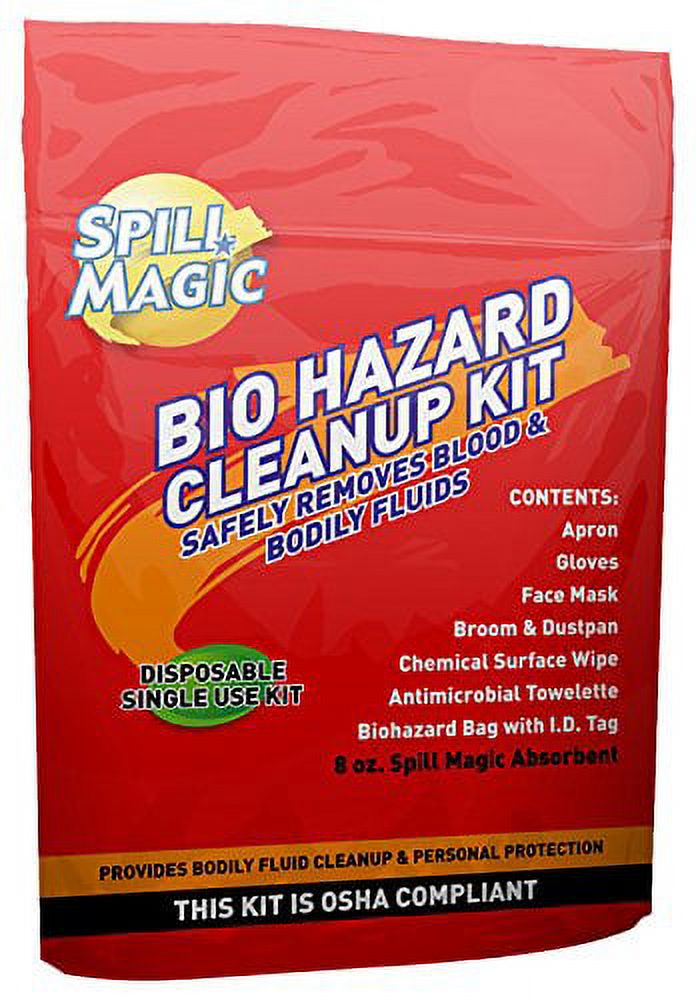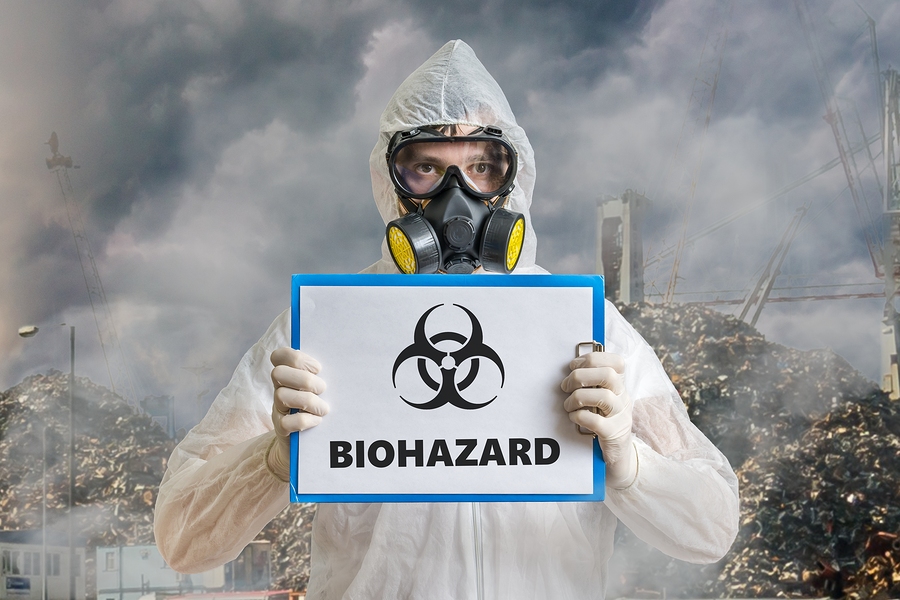Specialist Biohazard Clean-up for Crime Scenes, Trauma Incidents, and Contaminated Spaces
In the realm of professional biohazard clean-up, precise focus to detail and adherence to safety methods are paramount. When confronted with the aftermath of a criminal activity scene, trauma incident, or any kind of contaminated area, the relevance of correct cleaning can not be understated. The dangers and intricacies linked with biohazards require specialized understanding and know-how to ensure efficient removal. As we delve into the intricacies of biohazard cleaning for these sensitive settings, a deeper understanding of the obstacles and important procedures involved will certainly emerge, clarifying the indispensable function of specialist clean-up services in bring back safety and peace of mind.

Importance of Biohazard Cleaning
Biohazard clean-up adhering to criminal activity scenes and injury events is vital for making sure the security of individuals and the setting. When these occurrences take place, they typically leave a variety of biohazards such as blood, physical liquids, and other possibly infectious materials. These materials can nurture harmful microorganisms like microorganisms and viruses, posing significant health and wellness threats if not effectively cleaned up and sanitized.
Professional biohazard cleanup solutions are educated to manage these dangerous products securely and successfully. They have the required tools, such as individual protective gear and specialized cleaning up agents, to thoroughly decontaminate the influenced locations. By turning over the clean-up to qualified professionals, individuals can avoid direct exposure to damaging pathogens and protect against the spread of transmittable conditions.
In addition, proper biohazard cleanup is crucial for protecting the environment. Incorrect disposal of biohazardous materials can pollute dirt, water resources, and air, posing a risk to wildlife and the ecological community. By following strict cleanup protocols, professionals can ensure that biohazards are safely removed and taken care of in accordance with policies, lessening the threat of environmental contamination.
Types of Biohazards Encountered
Different hazardous materials commonly run into in criminal offense scenes and injury occurrences present significant health dangers if not handled correctly. Blood and physical fluids are among the most usual biohazards found in these circumstances.
Another kind of biohazard usually run into is sharp items like needles, damaged glass, and other products that can trigger injuries and send infections. Chemical dangers are also a worry, as crime scenes might consist of materials like tear gas, pepper spray, or medicine manufacturing products that need specific handling and disposal procedures to stop further damage.
In addition, mold and germs development can occur precede where disintegration or extended direct exposure to moisture has happened. These microbes can release toxic substances and irritants into the air, posing respiratory system risks to those exposed. Generally, biohazard clean-up experts need to be well-appointed and experienced to properly take care of these different sorts of dangerous materials to guarantee the security of themselves and others.
Equipment and Safety Gear
When attending to the important job of dealing with biohazards come across in criminal activity scenes and injury occurrences, the usage of appropriate equipment and safety equipment is critical to guaranteeing the safety and security of people associated with the cleanup procedure. Personal safety equipment (PPE) such as gloves, goggles, masks, and coveralls are necessary to avoid direct contact with potentially dangerous materials. Respirators are important when managing biohazards that might end up being airborne, securing employees from inhaling harmful fragments. Specialized cleaning tools like biohazard sharps, bags, and anti-bacterials containers are necessary for the safe collection and disposal of contaminated materials. Furthermore, sturdy devices such as industrial-grade cleaner, foggers, and ozone generators might be needed to extensively sterilize the affected location. Making sure that all equipment is properly kept, on a regular basis examined, and used according to safety and security standards is vital in decreasing the danger of direct exposure to biohazards during cleaning operations.
Clean-up Process and Strategies
Thorough and efficient cleaning of biohazardous products from crime scenes and trauma events requires thorough interest to detail and adherence to stringent security protocols. The clean-up procedure commonly entails numerous crucial steps. At first, the area must be assessed to identify the extent of contamination and the appropriate cleansing strategies required. Next off, all biohazardous materials, including blood, bodily fluids, and tissue deposits, must be thoroughly eliminated and dealt with in conformity with regional guidelines.
Complying with the elimination of biohazardous products, the afflicted area goes through a detailed cleansing and sanitation process. This step includes making use of specialized cleaning up agents and devices to make sure that all traces of contamination are gotten rid great site of. After cleansing, the area undergoes extensive testing to validate that it is secure and cost-free of any staying biohazards.

Decontamination and Disposal Procedures
To make certain thorough decontamination and appropriate disposal of biohazardous products, adhering to the meticulous clean-up procedure, details treatments must be carefully followed with stringent adherence to safety and security procedures. Purification includes the elimination or neutralization of pollutants to reduce the risk of direct exposure and spread of unsafe materials. This procedure normally consists of cleansing, sanitizing, and sterilizing the afflicted area utilizing customized equipment and EPA-approved chemicals.
As soon as purification is finished, appropriate disposal of biohazardous products is essential to stop more contamination or injury. Biohazardous waste, such as physical fluids or blood-soaked materials, need to be meticulously accumulated, packaged, and labeled according to regulatory standards. ATP testing. These products are then transferred to certified centers for disposal through ideal channels, ensuring conformity with regional, state, and government guidelines

Conclusion
Finally, expert biohazard cleaning is essential for guaranteeing the effective and secure removal of unsafe products from criminal offense scenes, injury events, and contaminated spaces. By using customized devices, safety gear, and complying with appropriate cleaning processes and methods, biohazard cleaning groups can successfully dispose and decontaminate of biohazards, lessening the danger of direct exposure and damage to people and the environment.
As we dig right into the details of biohazard clean-up for these delicate settings, a much deeper understanding of the difficulties and crucial treatments entailed will emerge, shedding light on the crucial duty of expert clean-up services in recovering safety and security crime scene cleanup education and tranquility of mind.
Professional biohazard cleaning solutions are educated to handle these dangerous materials securely and properly. By following rigorous cleanup protocols, specialists can make certain that biohazards are safely eliminated and disposed of in conformity with policies, minimizing the danger of ecological contamination.
Overall, biohazard clean-up specialists should be experienced and well-equipped to successfully handle these different kinds of hazardous materials to ensure the safety and security of themselves and others.
When attending dig this to the vital job of managing biohazards experienced in criminal activity scenes and injury events, the utilization of correct devices and protective gear is paramount to guaranteeing the safety and security of individuals included in the cleanup procedure.
Comments on “Biohazard Removal: Safe Handling and Disposal of Hazardous Products”